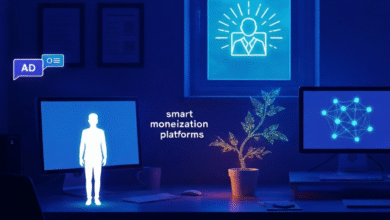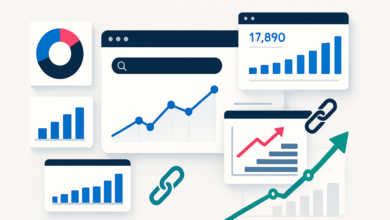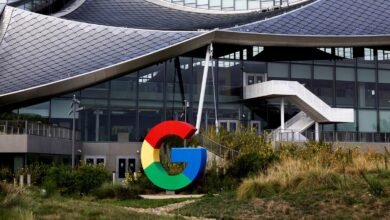Unify Your SEO & PPC for the AI Era

▼ Summary
– Generative AI has merged SEO and PPC into a single ecosystem, ending their traditional separation in search marketing.
– AI-powered search engines now deliver instant answers and integrated ads, reducing traditional listings and requiring combined SEO-PPC strategies for visibility.
– SEO’s role has evolved to build brand authority and trustworthy content that AI systems rely on, influencing both organic and paid performance.
– PPC must adapt by prioritizing high-intent clicks, aligning with user intent over keywords, and leveraging SEO insights for better ad placement.
– A holistic approach with shared goals, joint research, and unified metrics is essential for success in the AI-driven search landscape.
In today’s rapidly transforming digital environment, the traditional separation between SEO and PPC is dissolving, creating a unified approach essential for brand visibility. Search engines have evolved into conversational platforms powered by generative AI, delivering direct answers that often merge organic and paid content. This fundamental shift means relying solely on one strategy is no longer viable; success now depends on integrating both disciplines to capture valuable user interactions.
The distinction between organic and paid search has blurred significantly. Where SEO and PPC once operated independently, they now function as interconnected components of a cohesive strategy. A brand’s organic authority directly enhances both its organic and paid performance within AI-generated responses. High-quality, trustworthy content not only improves search rankings but can also boost ad Quality Scores, leading to lower costs and better ad placements. At the same time, AI-driven summaries and snapshots are reducing the number of traditional search listings, making each visibility opportunity more critical. Securing these moments requires close coordination, ensuring a brand appears whether in an organic snippet, a rich result, or a seamlessly integrated advertisement.
Understanding how AI is reshaping user behavior is crucial for developing effective strategies. One major change is the rise of zero-click answers, where AI provides immediate information on the results page, eliminating the need for users to click through to a website. This is especially prevalent with informational queries, as AI synthesizes data from various sources into concise summaries. This trend is driving funnel compression, shortening the user journey by delivering solutions or recommendations much earlier. Consequently, user expectations have shifted; people now look for a single comprehensive answer or a curated set of options presented in a conversational, easy-to-digest format. While ranking first for a keyword remains important, it no longer guarantees the same level of traffic, as visibility is now split between traditional results and AI-generated content.
SEO’s primary role in an AI-driven search world is to build the foundational credibility that AI systems depend on. When compiling information, AI models prioritize signals of relevance, the very elements SEO has always emphasized. A modern SEO strategy should concentrate on several key areas. First, move beyond keywords to articulate a consistent brand narrative across all platforms. Second, create content that is not only well-written but demonstrably trustworthy, reflecting experience, expertise, authoritativeness, and trustworthiness (E-E-A-T). Third, structure content for easy AI parsing using clear headings, scannable formats, and direct answers to common questions. Fourth, extend visibility beyond Google by maintaining a strong presence on social media, industry forums, and online communities to reinforce positive brand signals. Finally, actively monitor and manage brand sentiment, since negative perceptions can deter AI systems from referencing your content. In essence, SEO establishes the organic foundation that PPC can then amplify, creating a virtuous cycle where authority improves both relevance and ad efficiency.
Simultaneously, PPC’s function is evolving to align with new AI contexts. Ads are no longer confined to the top of the page; they can appear within conversational AI answers or alongside dynamic summaries. These integrated advertisements are selected based on user queries and the surrounding AI-generated content. To succeed, PPC teams must adapt in several ways. Prioritize quality over quantity, as fewer impressions may occur but each click will likely come from higher-intent users. Rethink keyword strategy by focusing on user intent patterns rather than exact matches, requiring a deeper understanding of the customer journey. Refine bidding and budget allocation to account for potentially higher costs per click, balanced by the expectation of superior conversion rates. Leverage SEO insights to identify high-opportunity queries where the brand already has organic AI visibility, enabling a coordinated effort to “own” the result through both organic and paid placements.
Implementing a holistic search strategy involves concrete steps to unify SEO and PPC efforts. Begin by aligning teams around shared goals and metrics, using dashboards that track combined visibility across organic impressions, AI snippet appearances, and ad placements. Conduct joint research into user prompts and intent, mapping the full customer journey to develop a unified strategy where organic content addresses broad informational needs and paid campaigns target complementary commercial terms. Create content that serves both channels, authoritative, in-depth resources for SEO that also function as fast, relevant landing pages for PPC. Emphasize brand trust signals collectively; SEO can build off-page credibility through mentions and earned media, while PPC highlights proof points like awards and customer reviews in ad copy. Adapt to platform-specific nuances, since AI behavior varies between Google, Bing, and other engines, and allocate budget for ongoing testing. Modernize analytics by moving beyond last-click attribution to a framework that captures total search-driven conversions from both organic and paid sources. Finally, commit to continuous optimization through regular cross-team meetings, sharing emerging queries from SEO and top-performing ads from PPC to enable data-driven refinements across the combined funnel.
The integration of AI into search has permanently changed the landscape, making the convergence of SEO and PPC not just beneficial but essential. As organic and paid results increasingly appear together within AI answers, marketers who maintain separate strategies risk diminished visibility and lost market share. A holistic approach ensures consistent brand discovery and a seamless user experience throughout the AI-guided search journey. By combining SEO’s foundational credibility with PPC’s targeted presence, brands can effectively engage users wherever AI surfaces answers, whether providing information or presenting solutions. The future of search will continue to evolve, but sustained success will belong to those who prioritize relevance, foster cross-channel collaboration, and employ unified metrics to maximize overall performance.
(Source: Search Engine Land)





